- Home
- James Patterson
Double Cross Page 4
Double Cross Read online
Page 4
The feeling in the den went from bad to a lot worse. The killer—or the terrorist, as I’d already begun to think of him—approached Tess Olsen. He pulled hard on the leash, and she struggled to her feet. The woman was sobbing uncontrollably. Possibly she knew what was going to happen now. Did that mean she knew the killer? How would she know him? Because of a book she was writing? What was her latest project?
Seconds later, the man had pulled her out on the terrace. He first peeled, then ripped the tape off her mouth. We couldn’t hear much from this distance—not until he grabbed Mrs. Olsen and hung her over the edge. Then her piercing screams reached the camera’s microphone, which was set up maybe twenty feet away.
All the while, the killer kept checking over his shoulder, looking toward the camera every few seconds.
“See that? How he moved back into the frame?” Bree said. “He wasn’t just putting on a show for the crowd on the street. This was meant for us as well—for whoever found the tape, anyway. Look at the bastard’s face.” Now he was smiling. Even from this distance, his eerie grin was clear and unmistakable.
The next few seconds seemed to stretch on forever, as I’m sure they did for Tess Olsen. He pulled her back inside and then set her down on the floor. Did she think there would be a reprieve? That she was to be spared? Her shoulders heaved once, then she began to cry again. A minute or so later, he brought her out on the terrace again.
“Here it comes,” Bree said gravely. “I don’t want to watch this.” But she did. We all did.
The killer was a powerful man, probably over six feet tall and well built. He shocked me by lifting Tess Olsen like a barbell, straight up over his head. He looked back at the camera one more time—Yes, you bastard, we’re watching—then winked and threw her off the balcony.
“My God,” Bree whispered. “Did he just wink at us?”
He didn’t leave the terrace, though. Or the picture frame. I could see by the angle of his head that he wasn’t looking straight down to where she fell. He was looking out at his audience, at the people down on the street. He was taking chances that he didn’t need to take.
In the scheme of things, that was good for us. Maybe that’s how we’d find him, catch this bastard. Because he was reckless—and liked to preen in front of an audience.
Then I analyzed my own thought: We, not they, were going to get this sonofabitch.
And then, the killer spoke to the camera, and this was the eeriest part of all. “You can try to capture me,” he said, “but you will fail . . . Dr. Cross.”
Sampson, Bree, and I turned to one another. John and I were speechless, and all Bree could manage was “Holy shit, Alex.”
Ready or not, I was back in the game.
Chapter 17
WELL, I WASN’T READY. Not yet, anyway. Four days after the Riverwalk murder, I was thinking about my patients. I was already conflicted, though. I was trying not to focus on Tess Olsen’s murder, and who the maniac killer might be, and how he could possibly know me, and what the hell he wanted from me.
I couldn’t help starting my day by checking the latest news on washingtonpost.com. Nothing further had happened during the night, thank God. No more murders, so at least he wasn’t on a spree.
The morning’s sessions would keep me on my toes, anyway. It was my biggest day of the week, the one I looked forward to but also dreaded in some ways. There was always the hope that I might do somebody some good, have a breakthrough. Or, possibly, I could fall right on my ass.
It started at seven with a recently widowed DC firefighter who was in conflict between a sense of duty to his job and kids, and a growing sense of meaninglessness about life that produced daily thoughts of suicide.
At eight I saw a Desert Storm vet who was still wrestling with demons he’d brought home from the war. He was a referral from my own therapist, Adele Finally, and I was hopeful that I could help him eventually. Still, this was the crisis stage of his treatment, so it was too early to tell if we were really communicating.
Next came a woman whose postpartum depression had left her with a lot of ambivalence toward her six-month-old daughter. We discussed her little girl and even talked about my feelings—just for a minute—about Damon possibly heading off to prep school. Same as in police work, I was usually unorthodox in the sessions. I was there to talk to people, and I talked freely, for the most part.
I had a half-hour break, during which I checked in with Bree, then glanced at the news on washingtonpost.com again. Still nothing new, no further attacks, no explanations for the death of Tess Olsen.
The morning’s final patient was a Georgetown law student whose mysophobia had become so intense, she’d begun incinerating her own underwear every night.
Quite a morning. Satisfying in a strange way. And relatively safe—at least for me.
Chapter 18
BREE CALLED THE OFFICE while I was eating an unbuttered hard roll before my one o’clock. “We did some close-up work on the tapes,” she said. “Tell me what you think of this, Alex. There’s a scar on the killer’s forehead. Shape of a half-moon. It’s fairly pronounced.”
I thought for a moment before answering. “Could mean head trauma at some time. This is a shot in the dark, but he could have damaged frontal lobes. People with frontal-lobe damage can display bad tempers and impulsiveness.”
“Thanks, Doc,” Bree said. “Nice having you on the team.”
I was on the team? Since when? Had I agreed to that? I didn’t think so.
After lunch, and the very nice homicide-case chat with Bree, I had my last client of the day, also my favorite, a woman in her midthirties named Sandy Quinlan.
Sandy was a recent transplant to DC from small-town life in northern Michigan, not far from Canada. She’d accepted an inner-city teaching job in Southeast, which had endeared her to me immediately.
Unfortunately, Sandy didn’t like herself very much. “I’ll bet you have a dozen clients like me. All these lonely, depressed single women in the big, bad city.”
“Actually, I don’t.” I told her the truth, a terrible habit with me. “You’re my only DSW in the BBC.”
Sandy got the joke and smiled, then went on. “Well, it’s just . . . pathetic. Nearly every woman I know is looking for the same dumb-ass thing.”
“Happiness?” I asked.
“I was going to say a man. Or a woman, I suppose. Somebody to love.”
I definitely saw a different person in Sandy than she saw in herself. She chose to appear as the classic loner stereotype, nice looks hidden behind black-rimmed glasses and dark, baggy clothes. As she’d grown comfortable with me, she’d proven to be personable, interesting, and funny when she wanted to be. And she cared deeply about the children she taught. She talked about them frequently and in the warmest terms. No ambivalence whatsoever.
“I have a real hard time seeing you as pathetic,” I finally said to her. “Sorry, it’s just an opinion. I could be all wrong about that.”
“Well, when your therapist is probably your best friend, call it what you want.” Before I could respond, she laughed self-consciously. “Don’t worry, I don’t mean that as psycho as it sounds. I just mean that . . .”
My human impulse was to reach out to her, but as a therapist, I couldn’t, or shouldn’t, anyway. There was something in her eyes, though—they were so needy—that I couldn’t help having a dual response. I wanted her to know that I cared about how she did. And I wanted to make sure that our relationship was clear. Maybe Sandy’s tone and that expectant glance of hers hadn’t meant anything. Then again, everything means something, or so I’ve read in a lot of very thick books used at schools like Georgetown and Johns Hopkins.
I’d have to be careful with Sandy. We got through the session okay, and once she left, I was done for the day. Or was I? Did I have a second job to go to now?
I was just coming down the stairs of my building when my cell rang. I didn’t recognize the number. Now what?
I put the phone to my ear.
“I’m calling for Kyle Craig,” a male voice said. He was breaking up some but had my full attention. “He can’t come to the phone right now . . . because he’s in solitary confinement in Colorado. But he wanted you to know he’s thinking about you every day, and he has a surprise planned for you. A terrific surprise, right there in Washington, DC. Remember, Kyle is the man with the plan. Oh, and he also wants you to know that he hasn’t seen the sun in four years—and it’s made him stronger and better at what he does.”
The phone went dead in my hand.
Kyle Craig—Jesus, what next?
And what was that message supposed to mean? “He has a surprise planned for you.”
Chapter 19
I TRIED TO TELL MYSELF that I couldn’t spend a lot of time worrying about the homicidal maniacs I had already put away in jail. Not when some others were still walking free. Besides, nobody had ever come close to breaking out of ADX Florence. And this wasn’t the first time Craig had threatened me from his jail cell.
Also, I wasn’t on the Job anymore. Of course, I was going out with the head detective on a very big, very nasty case.
The Riverwalk homicide was already a media sensation. Everybody seemed to be talking about it. Even my patients had brought it up. The more hysterical news outlets spun some absurd theory every couple of hours. They were selling fear 24-7, doing a brisk business, and I had to admit I dealt with that particular commodity myself. Except that I tried to relieve the fear, as best I could, anyway; I had always attempted to stop the panic and make it go away by taking killers off the streets.
All the MPD theories about the killer seemed to be going nowhere, or at least Bree thought so. The facial image from the video had no match in the FBI’s Terrorist Screening Database. The voiceprint had been contracted out to the same agency that worked with the Bureau on Osama bin Laden’s recordings after 9⁄11. So far, no luck there either, but it was too soon to expect much.
Also, the killer hadn’t identified himself with any jihad or cell. And no one had stepped up with information about him after seeing—on repeated news broadcasts—still pictures made by spectators of the murder.
Bree shared every shred of information with the Feds, but she also continued her own investigation. That meant sixteen-hour days for her.
On Thursday evening, I stopped by her office, hoping to coax her out for a bite to eat. The MPD’s Violent Crimes Unit is fairly inconspicuous, located behind an ordinary-looking strip mall in Southeast. There’s more than enough parking, though, which some cops joke is the real reason everybody wants to work there. It just could be.
I found Bree’s cube empty. The computer was still on, with a yellow sticky note on the monitor that said Call Alex in Bree’s handwriting. I hadn’t heard from her, though—not all day. So what was she up to now?
“You looking for Bree?” The detective from the next cubicle gestured with his half-eaten sub. “Try the conference room. Down that hallway to your left. She’s been camping out in there.”
When I entered the room, Bree was sitting with her feet up and a remote in one hand, scratching her head with the other. The killer’s video was playing on the television. Open files, pages of notes, and crime-scene photos were spread out everywhere. And still, just seeing her there turned me on more than I cared to admit.
“Hey, you. What time is it?” she called when she spotted me hovering across the room.
I closed the door before kissing her hello a couple of times. “Dinnertime, break time. You hungry?”
“Starved, actually. Just watch this with me a few more times? I’m going cross-eyed in here by myself.”
I was happy to help out and then not terribly surprised when “a few more times” became dozens of viewings, and dinner at Kinkead’s turned into take-out empanadas from around the corner.
The grisly murder tape from the Riverwalk never got any easier to watch. Neither did hearing my name spoken on it. I compensated by lasering in on the killer. Maybe there was some nuance of his speech or behavior, something nobody had noticed yet. I knew this exercise wasn’t about giant leaps right now; it was about making small connections. Like Tess Olsen being a crime writer. Or maybe even the Hallmark greeting cards I’d noticed in the apartment. The killer’s need for an audience.
So it surprised us both a few minutes later when we found something important, something that might be huge.
Chapter 20
IT STARTED OUT as a barely discernible flash, something almost subliminal in the static just before the second half of the tape began. Bree and I had been staring so much at what the killer wanted us to see, we hadn’t really looked anywhere else.
“Hold it a second,” I said.
I picked up the remote and rewound the tape a bit, then froze it.
“There,” I said to Bree. “See it?”
It was almost nothing. More like the suggestion of an image, almost too fast for the human eye or even the slow-motion feature on the VCR. A ghost is what it was. A clue. Left there on purpose?
“This tape’s been used before,” I said.
Bree was already putting on her shoes, which were size-ten black flats. “You know anyone at the Cyber Unit over at the Bureau?” she blurted out.
The police department relied heavily on the FBI for video-forensics assistance. I knew a few names over there, but it was now nine o’clock at night. That didn’t seem to matter to Bree, who was up out of her seat and pacing.
She finally picked up the phone herself. “Let me try Wendy Timmerman. She works late.”
I raised my eyebrows at her. “Wendy Timmerman works late? Someone’s been paying attention.”
Wendy was ostensibly an office manager for the department, but she was also something of a secret weapon for anyone who wanted to bend the rules a little without breaking the law. She knew everyone, and everyone, it seemed, owed her one kind of favor or another.
Plus, she had no life. She practically lived at her desk.
Sure enough, Wendy talked for a couple of minutes to Bree, then called back with a name and number.
“Jeffery Antrim,” Bree said, hanging up. “Lives over in Adams Morgan. Supposed to be a genius at this stuff. I guess he moonlights out of his apartment, but Wendy said bring him a six-pack, and we’ll be admitted to his lair in a flash. Hey—remind me to send Wendy some flowers.”
“Don’t bother,” I said. “She’ll call you when she wants a favor. It’ll be more than some flowers.”
Chapter 21
AS WENDY TIMMERMAN had suggested we should, we stopped at a convenience store on our way over to the Adams Morgan neighborhood. We sneaked a couple of tantalizing kisses in the store, then in the car, but now we were on our way again, back to business, damn it. Jeffery Antrim, who seemed closer to Damon’s age than my own, was friendly enough and let us right in when I showed him the beer. I had my doubts about the “boy genius” label until I saw his home setup. The small apartment—laboratory, “lair,” whatever—barely had room for furniture. I wondered if any of the expensive equipment, piled everywhere, had been pilfered from the Bureau.
We sat on mismatched kitchen chairs for a few hours, drinking the second six-pack we’d brought, while Jeffery worked in the other room. Sooner than I expected, he called us in to look at what he had found.
“Here’s the scoopy-doopy-doo. There wasn’t much more than shadow images on the underlying track. So I captured everything I could. Then digitized it. I’m assuming you won’t mind a composite of deinterlaced frames?”
“I guess it depends,” Bree said.
“On what?”
“On what the hell you just said, Jeffery. You speak English? Or maybe Spanish? My Spanish is serviceable.”
Jeffery smiled at Bree. “Well, here you go. Take a look for yourselves. I can always break it back down if you want.” He tapped out a few more commands. “It’s printing now, but you can see it here. Take a good look at this.”
We leaned close to watch one of the small monit
ors in a tower of gadgetry stacked on his desk.
The image was indeed shadowy, more dark than light, but still discernible. In fact, it was immediately familiar to both of us.
“Holy shit,” Bree said under her breath. “Suddenly, it all becomes clear as mud.”
“Isn’t that Abu Ghraib?” Jeffery asked from where he was stationed behind us. “It is . . . right?”
The Abu Ghraib prison scandal in Iraq was some years old now but was still a sore spot in a lot of Washington circles, and elsewhere, of course. Apparently with the Riverwalk killer as well.
The image was either a still photo or a news-video capture. It didn’t really matter which at this point. Whatever details were unclear, I could pretty much fill in from memory. A female American soldier stood in a wide cell-lined corridor. On the floor at her feet was a hooded, naked Iraqi prisoner.
The man was on all fours, just as Tess Olsen had been.
Around his neck was a dog collar attached to a leash, which the soldier held.
Bree’s eyes stayed locked on to the image, and she slowly shook her head back and forth. “So, Jeffery, you keep any coffee in that tiny kitchen or should I go pick some up?”
Chapter 22
THE KILLER’S SECOND STORY was one of his favorite genres, science fiction.
Oh yes, this was delicious. The plan was working just right so far.
The killer wasn’t playing the Iraqi soldier anymore, but this was a better story and a much juicier role for him: Dr. Xander Swift. What actor wouldn’t kill for the part, so to speak, and to do this particular scene? In the theater, of all places. Delicioso!
The sidewalk in front of the august Kennedy Center was quickly filling with people that night. The crowd was mostly young, urban eclectic, confident, slightly obnoxious. Just about what you’d expect at a science-fiction stage adaptation of a short story, already once turned into a Hollywood movie. The difference was that the play had a big star actor in it. Thus the sizable crowd, though it wasn’t quite a sellout.

 Miracle at Augusta
Miracle at Augusta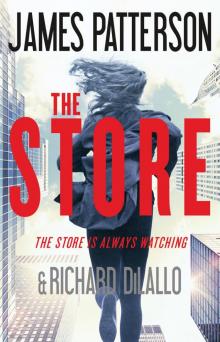 The Store
The Store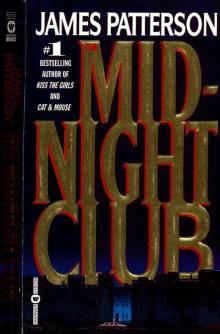 The Midnight Club
The Midnight Club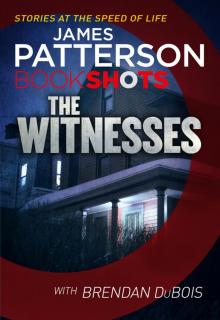 The Witnesses
The Witnesses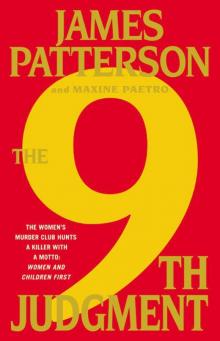 The 9th Judgment
The 9th Judgment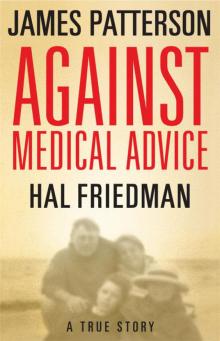 Against Medical Advice
Against Medical Advice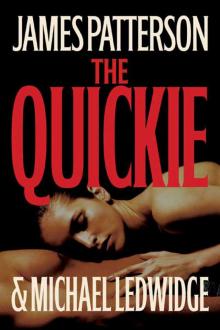 The Quickie
The Quickie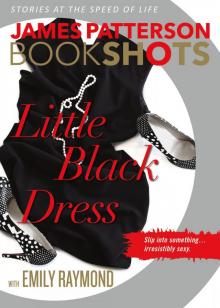 Little Black Dress
Little Black Dress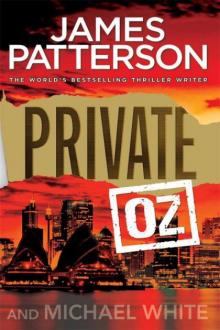 Private Oz
Private Oz Homeroom Diaries
Homeroom Diaries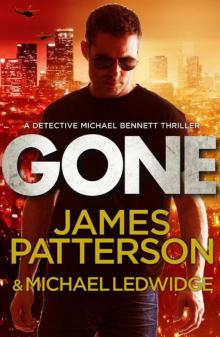 Gone
Gone Lifeguard
Lifeguard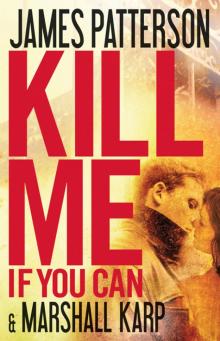 Kill Me if You Can
Kill Me if You Can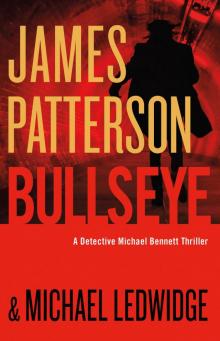 Bullseye
Bullseye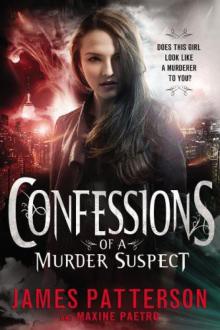 Confessions of a Murder Suspect
Confessions of a Murder Suspect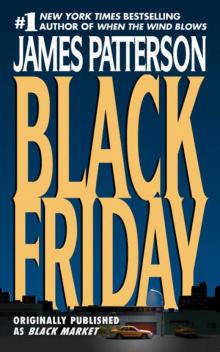 Black Friday
Black Friday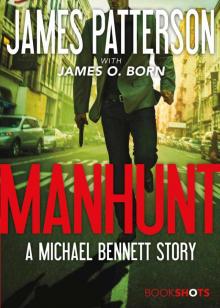 Manhunt
Manhunt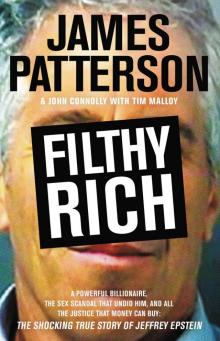 Filthy Rich
Filthy Rich Step on a Crack
Step on a Crack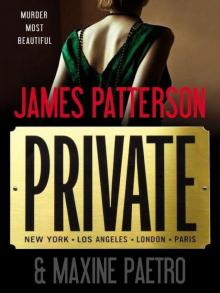 Private
Private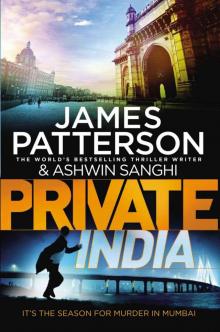 Private India
Private India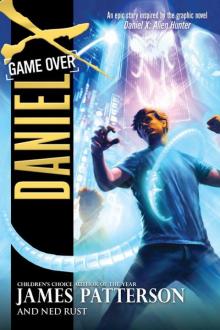 Game Over
Game Over Private Sydney
Private Sydney The Murder House
The Murder House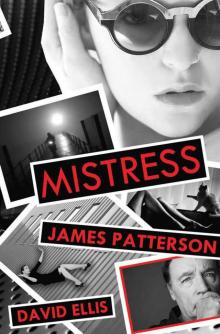 Mistress
Mistress I, Michael Bennett
I, Michael Bennett The Gift
The Gift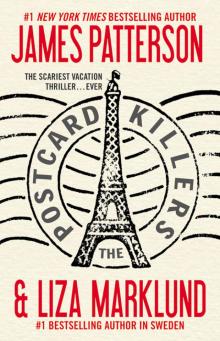 The Postcard Killers
The Postcard Killers The Shut-In
The Shut-In The House Husband
The House Husband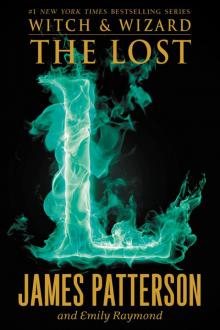 The Lost
The Lost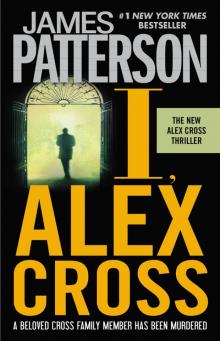 I, Alex Cross
I, Alex Cross Going Bush
Going Bush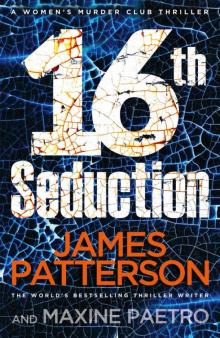 16th Seduction
16th Seduction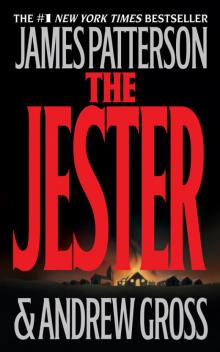 The Jester
The Jester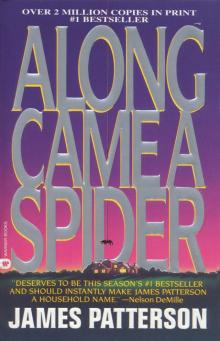 Along Came a Spider
Along Came a Spider The Lake House
The Lake House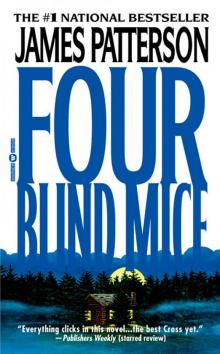 Four Blind Mice
Four Blind Mice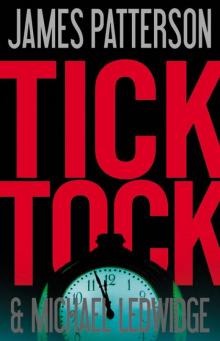 Tick Tock
Tick Tock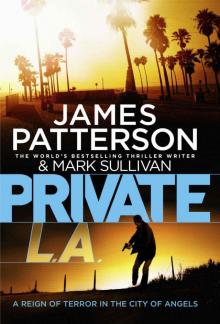 Private L.A.
Private L.A.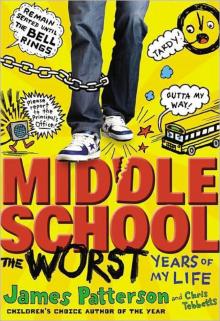 Middle School, the Worst Years of My Life
Middle School, the Worst Years of My Life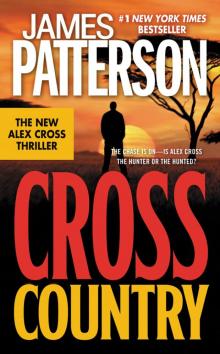 Cross Country
Cross Country The Final Warning
The Final Warning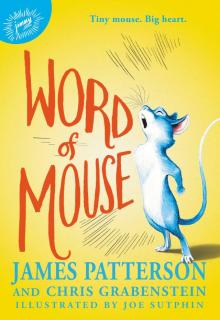 Word of Mouse
Word of Mouse Come and Get Us
Come and Get Us Sail
Sail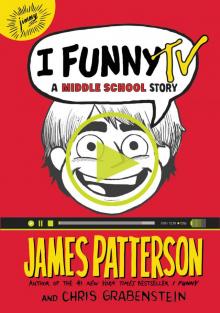 I Funny TV: A Middle School Story
I Funny TV: A Middle School Story Private London
Private London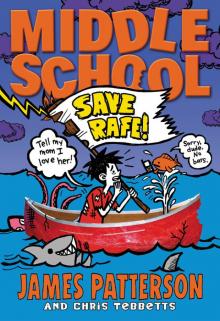 Save Rafe!
Save Rafe!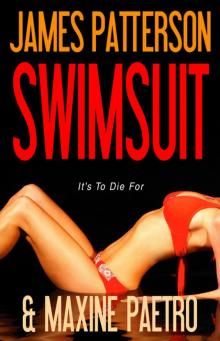 Swimsuit
Swimsuit Sam's Letters to Jennifer
Sam's Letters to Jennifer 3rd Degree
3rd Degree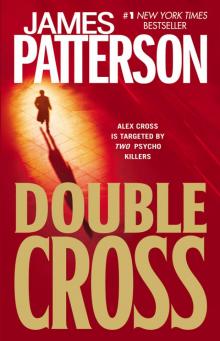 Double Cross
Double Cross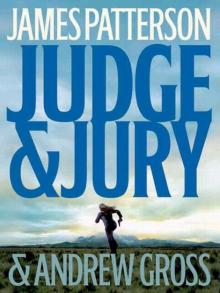 Judge & Jury
Judge & Jury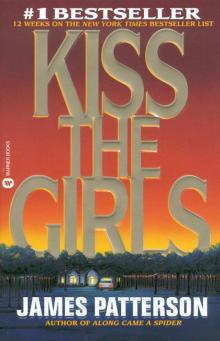 Kiss the Girls
Kiss the Girls Second Honeymoon
Second Honeymoon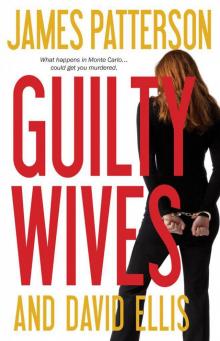 Guilty Wives
Guilty Wives 1st to Die
1st to Die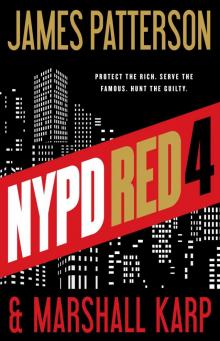 NYPD Red 4
NYPD Red 4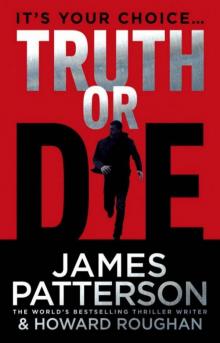 Truth or Die
Truth or Die Private Vegas
Private Vegas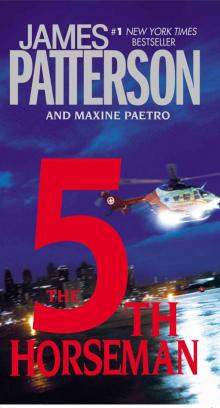 The 5th Horseman
The 5th Horseman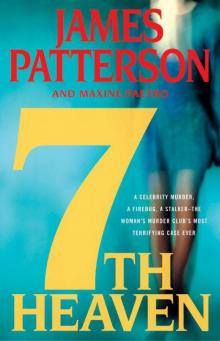 7th Heaven
7th Heaven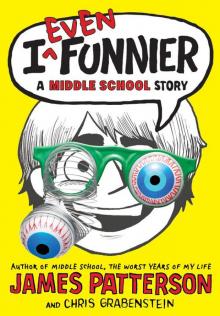 I Even Funnier
I Even Funnier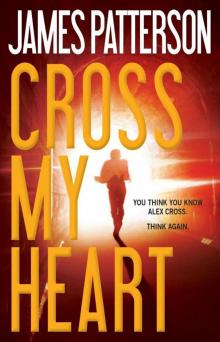 Cross My Heart
Cross My Heart Let’s Play Make-Believe
Let’s Play Make-Believe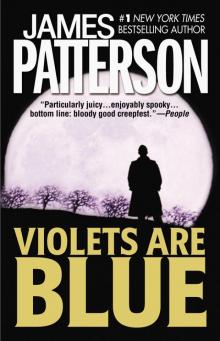 Violets Are Blue
Violets Are Blue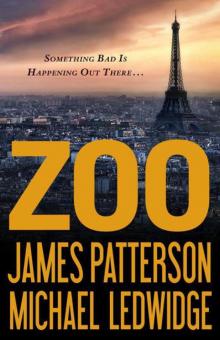 Zoo
Zoo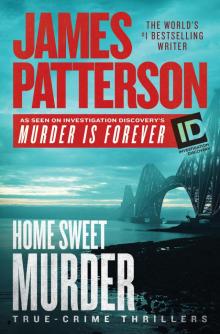 Home Sweet Murder
Home Sweet Murder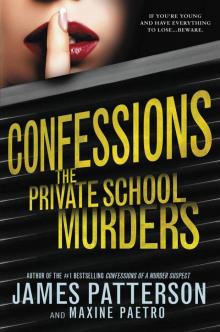 The Private School Murders
The Private School Murders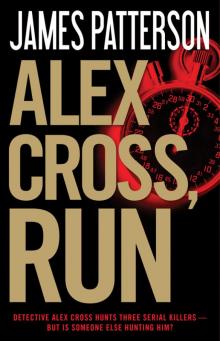 Alex Cross, Run
Alex Cross, Run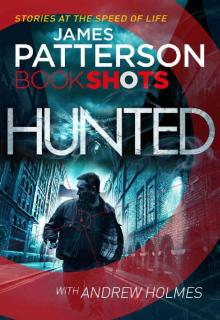 Hunted: BookShots
Hunted: BookShots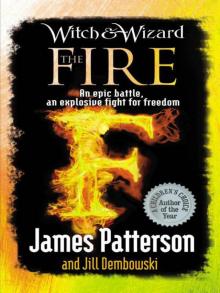 The Fire
The Fire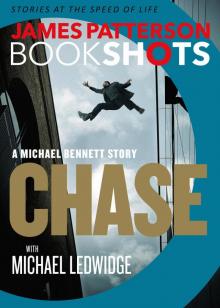 Chase
Chase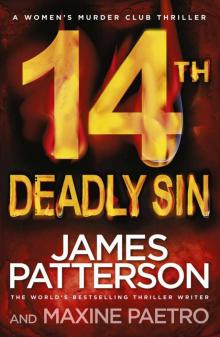 14th Deadly Sin
14th Deadly Sin Bloody Valentine
Bloody Valentine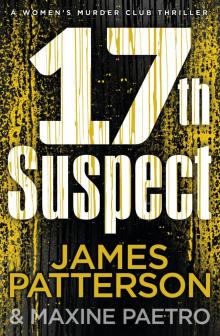 The 17th Suspect
The 17th Suspect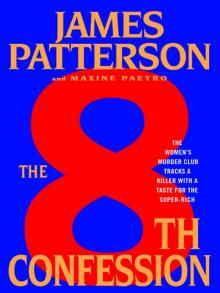 The 8th Confession
The 8th Confession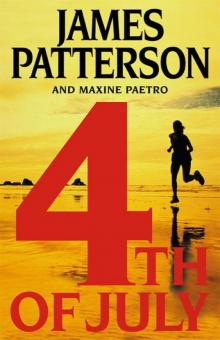 4th of July
4th of July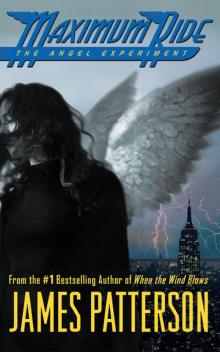 The Angel Experiment
The Angel Experiment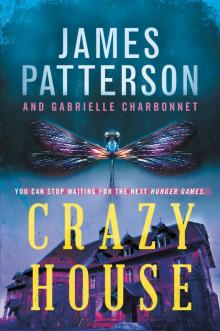 Crazy House
Crazy House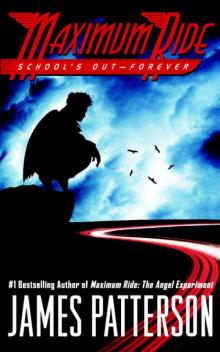 School's Out - Forever
School's Out - Forever Suzanne's Diary for Nicholas
Suzanne's Diary for Nicholas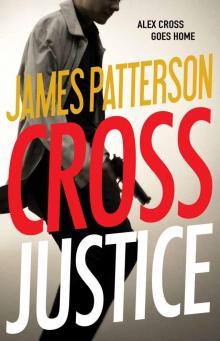 Cross Justice
Cross Justice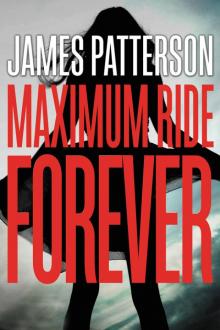 Maximum Ride Forever
Maximum Ride Forever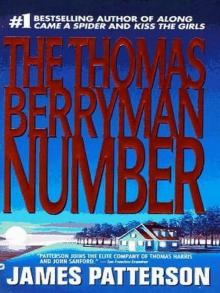 The Thomas Berryman Number
The Thomas Berryman Number Honeymoon
Honeymoon The Medical Examiner
The Medical Examiner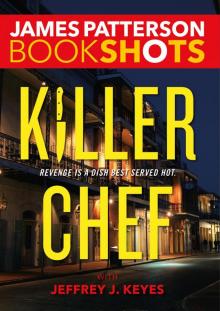 Killer Chef
Killer Chef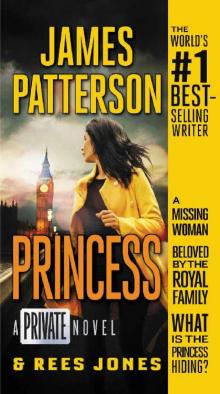 Private Princess
Private Princess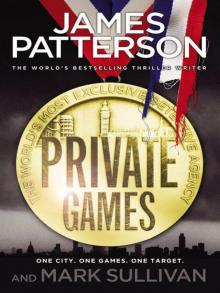 Private Games
Private Games Burn
Burn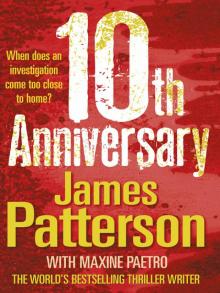 10th Anniversary
10th Anniversary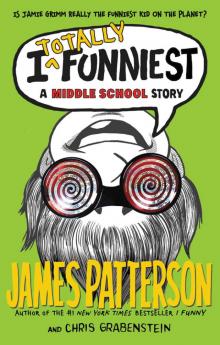 I Totally Funniest: A Middle School Story
I Totally Funniest: A Middle School Story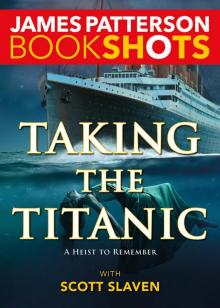 Taking the Titanic
Taking the Titanic The Lawyer Lifeguard
The Lawyer Lifeguard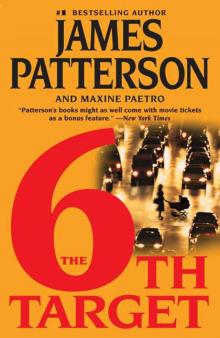 The 6th Target
The 6th Target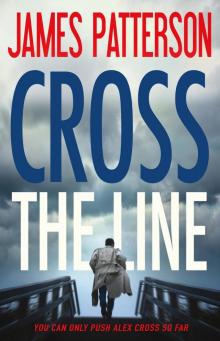 Cross the Line
Cross the Line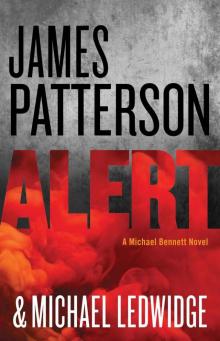 Alert
Alert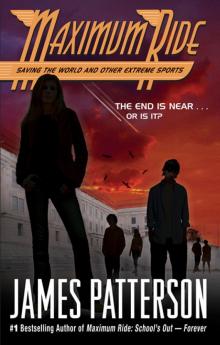 Saving the World and Other Extreme Sports
Saving the World and Other Extreme Sports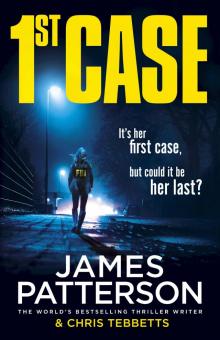 1st Case
1st Case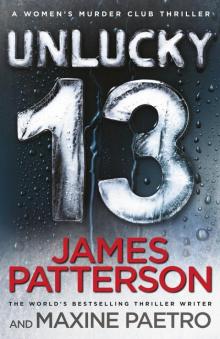 Unlucky 13
Unlucky 13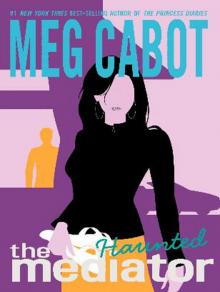 Haunted
Haunted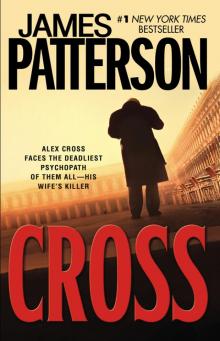 Cross
Cross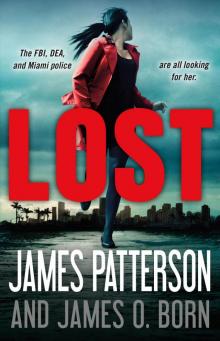 Lost
Lost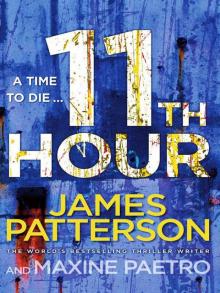 11th Hour
11th Hour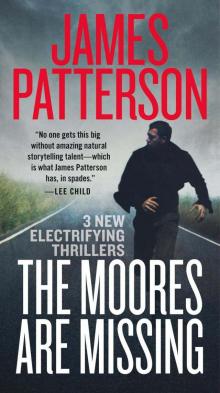 Bookshots Thriller Omnibus
Bookshots Thriller Omnibus Target: Alex Cross
Target: Alex Cross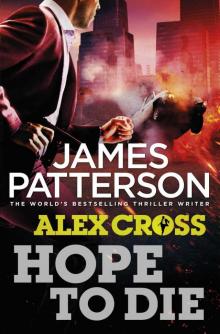 Hope to Die
Hope to Die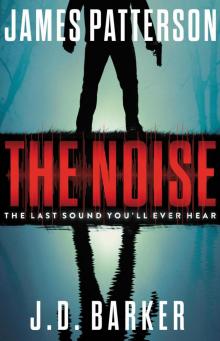 The Noise
The Noise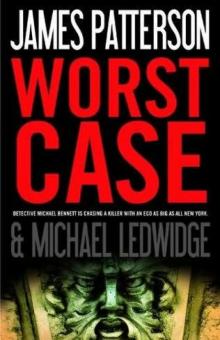 Worst Case
Worst Case Dog's Best Friend
Dog's Best Friend Nevermore: The Final Maximum Ride Adventure
Nevermore: The Final Maximum Ride Adventure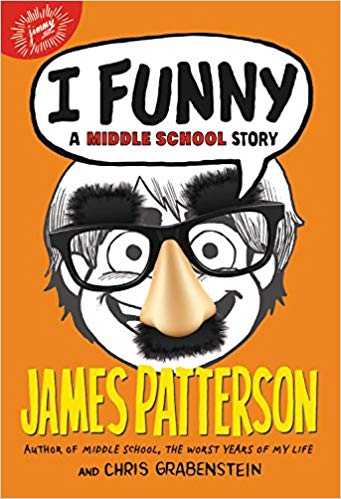 I Funny: A Middle School Story
I Funny: A Middle School Story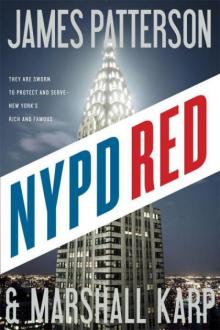 NYPD Red
NYPD Red Till Murder Do Us Part
Till Murder Do Us Part Black & Blue
Black & Blue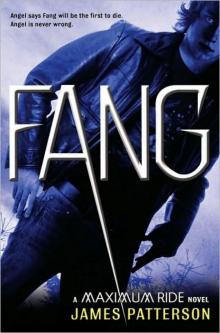 Fang
Fang Liar Liar
Liar Liar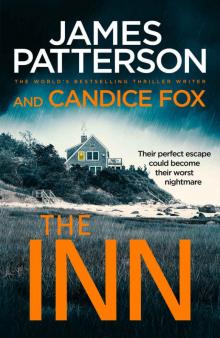 The Inn
The Inn Sundays at Tiffany's
Sundays at Tiffany's Middle School: Escape to Australia
Middle School: Escape to Australia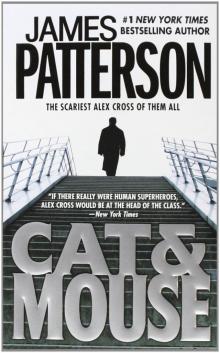 Cat and Mouse
Cat and Mouse Instinct
Instinct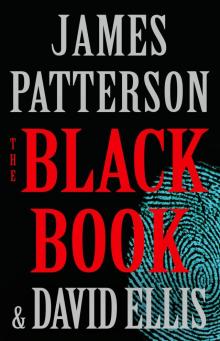 The Black Book
The Black Book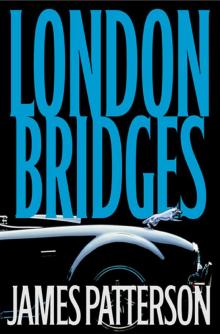 London Bridges
London Bridges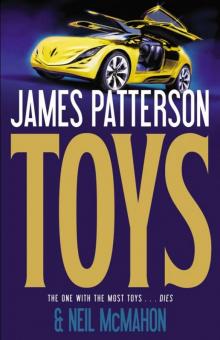 Toys
Toys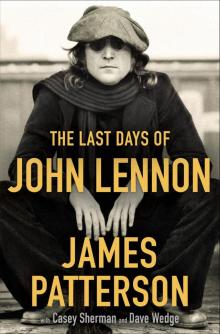 The Last Days of John Lennon
The Last Days of John Lennon Roses Are Red
Roses Are Red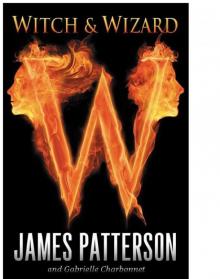 Witch & Wizard
Witch & Wizard The Dolls
The Dolls The Christmas Wedding
The Christmas Wedding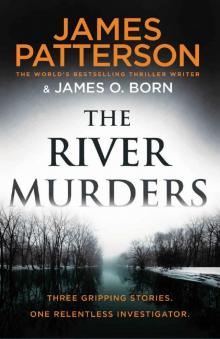 The River Murders
The River Murders The 18th Abduction
The 18th Abduction The 19th Christmas
The 19th Christmas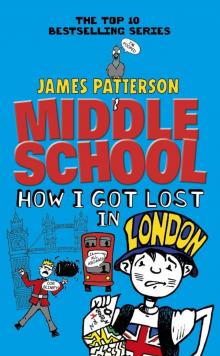 Middle School: How I Got Lost in London
Middle School: How I Got Lost in London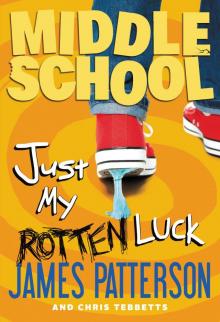 Just My Rotten Luck
Just My Rotten Luck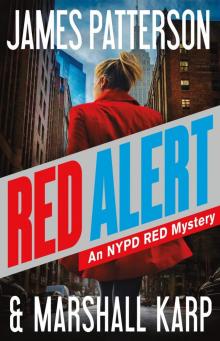 Red Alert
Red Alert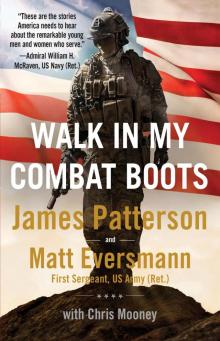 Walk in My Combat Boots
Walk in My Combat Boots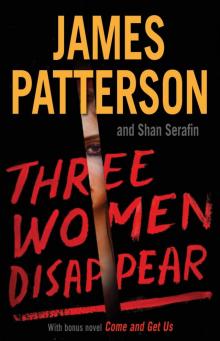 Three Women Disappear
Three Women Disappear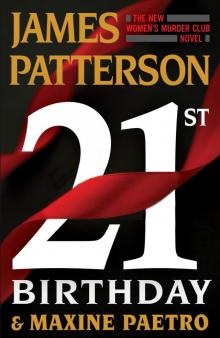 21st Birthday
21st Birthday All-American Adventure
All-American Adventure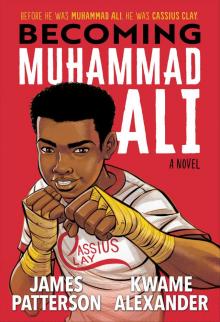 Becoming Muhammad Ali
Becoming Muhammad Ali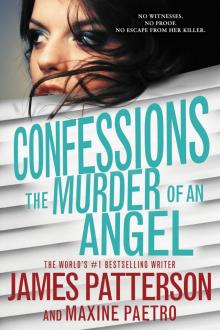 The Murder of an Angel
The Murder of an Angel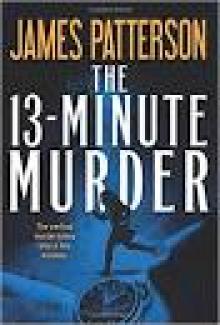 The 13-Minute Murder
The 13-Minute Murder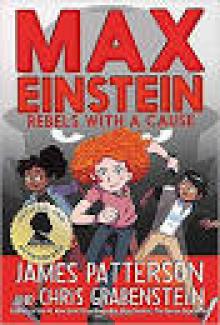 Rebels With a Cause
Rebels With a Cause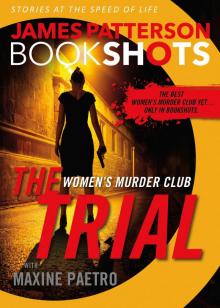 The Trial
The Trial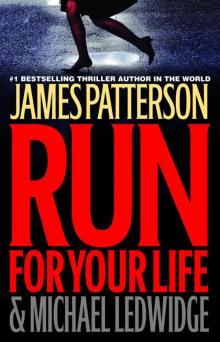 Run for Your Life
Run for Your Life The House Next Door
The House Next Door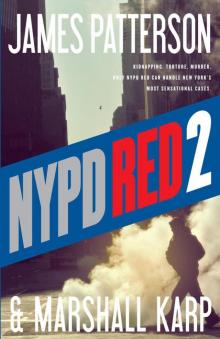 NYPD Red 2
NYPD Red 2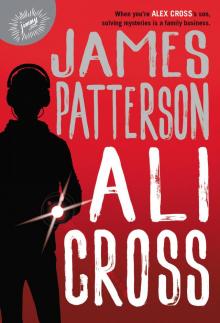 Ali Cross
Ali Cross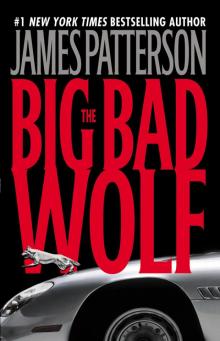 The Big Bad Wolf
The Big Bad Wolf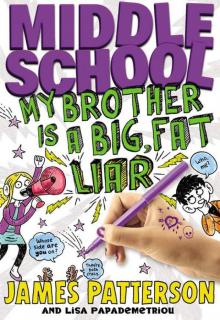 Middle School: My Brother Is a Big, Fat Liar
Middle School: My Brother Is a Big, Fat Liar Private Paris
Private Paris Miracle on the 17th Green
Miracle on the 17th Green The People vs. Alex Cross
The People vs. Alex Cross The Beach House
The Beach House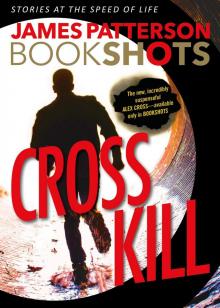 Cross Kill
Cross Kill Dog Diaries
Dog Diaries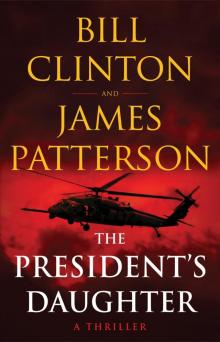 The President's Daughter
The President's Daughter Happy Howlidays
Happy Howlidays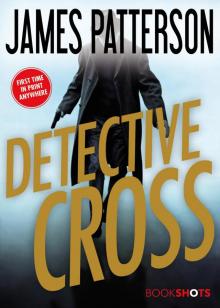 Detective Cross
Detective Cross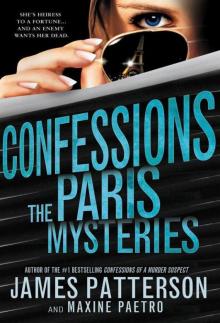 The Paris Mysteries
The Paris Mysteries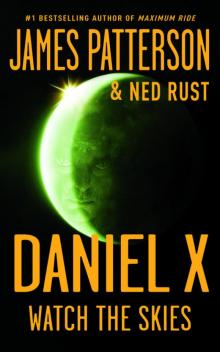 Watch the Skies
Watch the Skies 113 Minutes
113 Minutes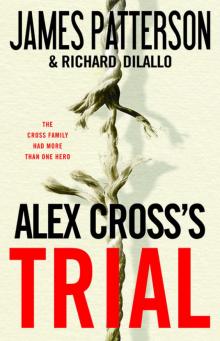 Alex Cross's Trial
Alex Cross's Trial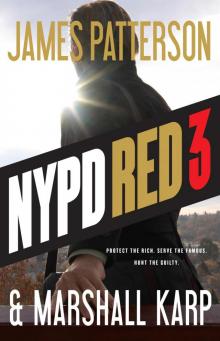 NYPD Red 3
NYPD Red 3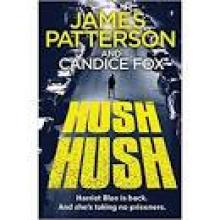 Hush Hush
Hush Hush Now You See Her
Now You See Her Merry Christmas, Alex Cross
Merry Christmas, Alex Cross 2nd Chance
2nd Chance Private Royals
Private Royals Two From the Heart
Two From the Heart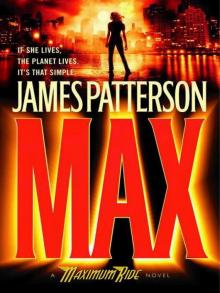 Max
Max I, Funny
I, Funny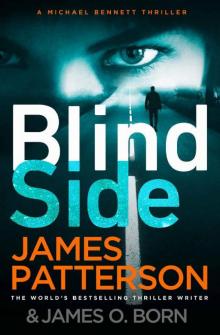 Blindside (Michael Bennett)
Blindside (Michael Bennett) Sophia, Princess Among Beasts
Sophia, Princess Among Beasts Armageddon
Armageddon Don't Blink
Don't Blink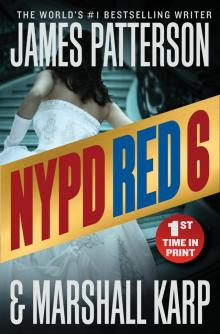 NYPD Red 6
NYPD Red 6 The First Lady
The First Lady Texas Outlaw
Texas Outlaw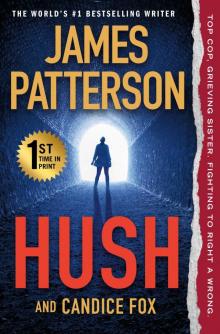 Hush
Hush Beach Road
Beach Road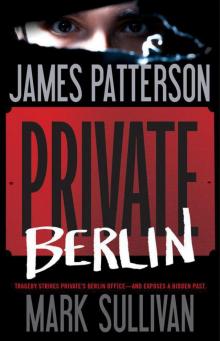 Private Berlin
Private Berlin The Family Lawyer
The Family Lawyer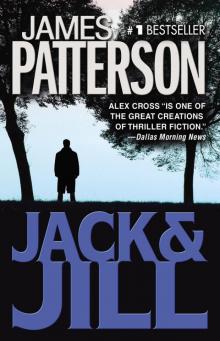 Jack & Jill
Jack & Jill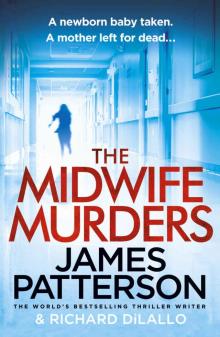 The Midwife Murders
The Midwife Murders Middle School: Rafe's Aussie Adventure
Middle School: Rafe's Aussie Adventure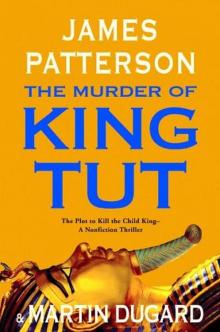 The Murder of King Tut: The Plot to Kill the Child King
The Murder of King Tut: The Plot to Kill the Child King First Love
First Love The Dangerous Days of Daniel X
The Dangerous Days of Daniel X Hawk
Hawk Private Delhi
Private Delhi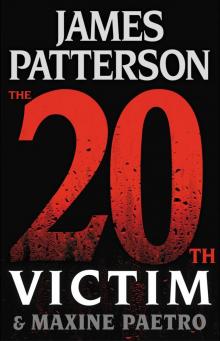 The 20th Victim
The 20th Victim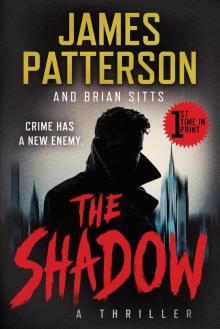 The Shadow
The Shadow Katt vs. Dogg
Katt vs. Dogg The Palm Beach Murders
The Palm Beach Murders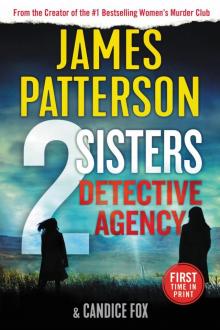 2 Sisters Detective Agency
2 Sisters Detective Agency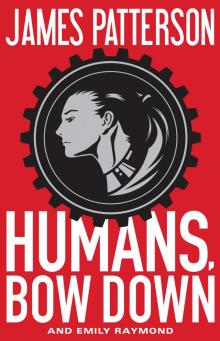 Humans, Bow Down
Humans, Bow Down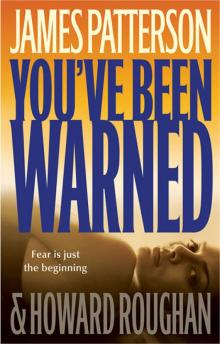 You've Been Warned
You've Been Warned Cradle and All
Cradle and All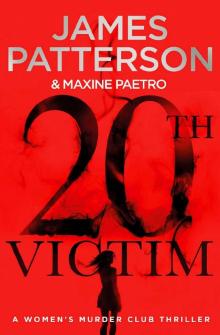 20th Victim: (Women’s Murder Club 20) (Women's Murder Club)
20th Victim: (Women’s Murder Club 20) (Women's Murder Club)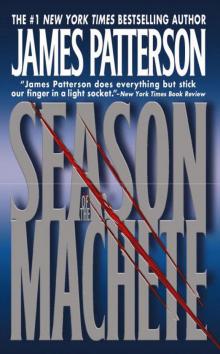 Season of the Machete
Season of the Machete Woman of God
Woman of God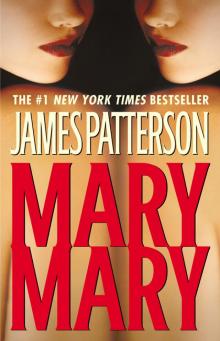 Mary, Mary
Mary, Mary Blindside
Blindside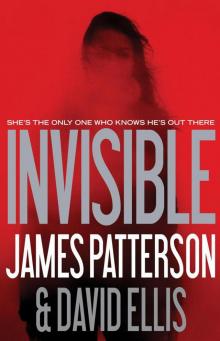 Invisible
Invisible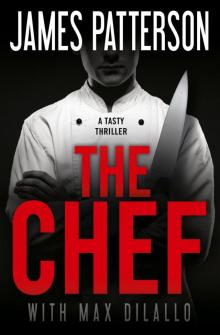 The Chef
The Chef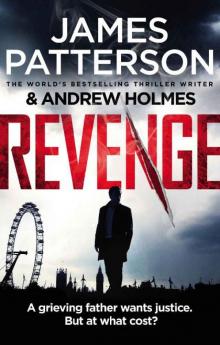 Revenge
Revenge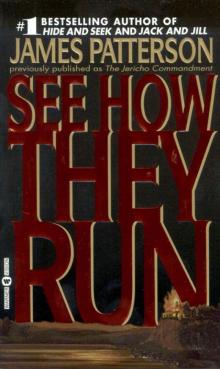 See How They Run
See How They Run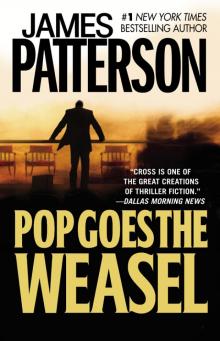 Pop Goes the Weasel
Pop Goes the Weasel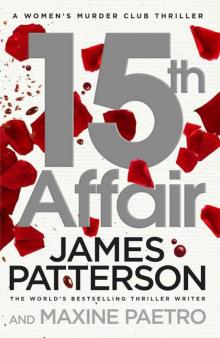 15th Affair
15th Affair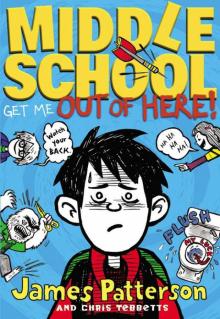 Middle School: Get Me Out of Here!
Middle School: Get Me Out of Here!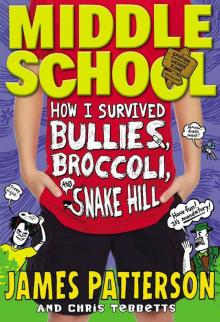 Middle School: How I Survived Bullies, Broccoli, and Snake Hill
Middle School: How I Survived Bullies, Broccoli, and Snake Hill From Hero to Zero - Chris Tebbetts
From Hero to Zero - Chris Tebbetts G'day, America
G'day, America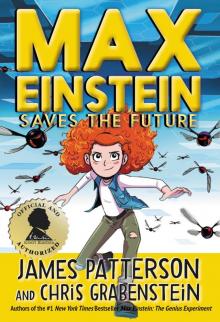 Max Einstein Saves the Future
Max Einstein Saves the Future The Cornwalls Are Gone
The Cornwalls Are Gone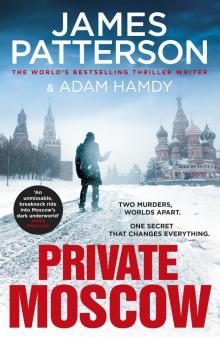 Private Moscow
Private Moscow Two Schools Out - Forever
Two Schools Out - Forever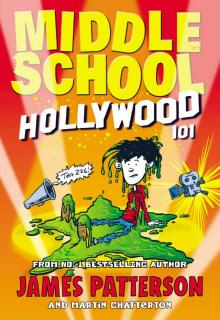 Hollywood 101
Hollywood 101 Deadly Cargo: BookShots
Deadly Cargo: BookShots 21st Birthday (Women's Murder Club)
21st Birthday (Women's Murder Club)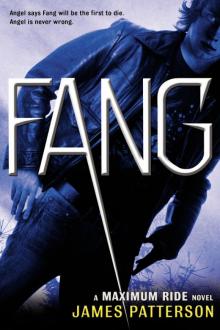 The Sky Is Falling
The Sky Is Falling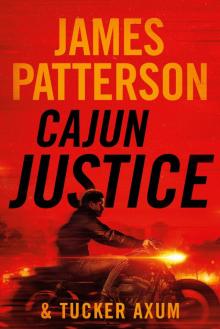 Cajun Justice
Cajun Justice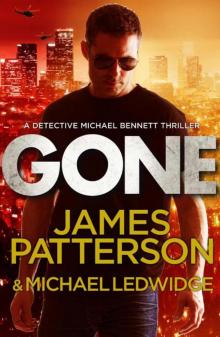 Bennett 06 - Gone
Bennett 06 - Gone The House of Kennedy
The House of Kennedy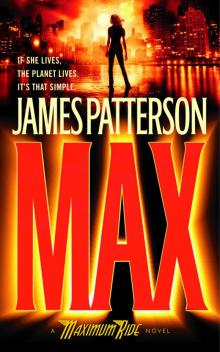 Waterwings
Waterwings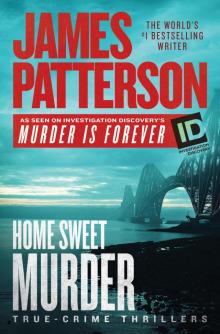 Murder is Forever, Volume 2
Murder is Forever, Volume 2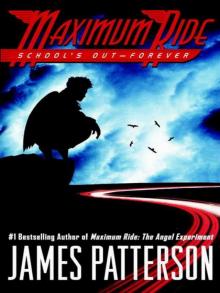 Maximum Ride 02
Maximum Ride 02 Treasure Hunters--The Plunder Down Under
Treasure Hunters--The Plunder Down Under Private Royals: BookShots (A Private Thriller)
Private Royals: BookShots (A Private Thriller)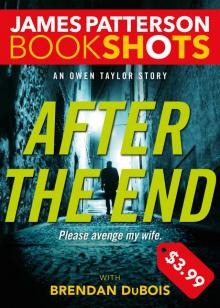 After the End
After the End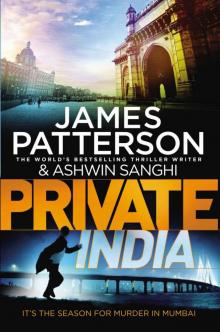 Private India: (Private 8)
Private India: (Private 8) Escape to Australia
Escape to Australia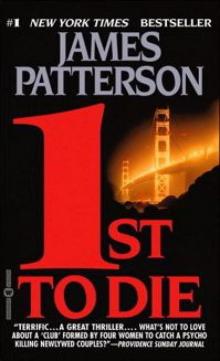 WMC - First to Die
WMC - First to Die Boys Will Be Boys
Boys Will Be Boys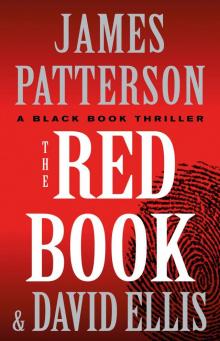 The Red Book
The Red Book 11th hour wmc-11
11th hour wmc-11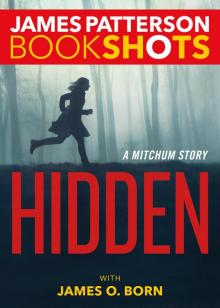 Hidden
Hidden You've Been Warned--Again
You've Been Warned--Again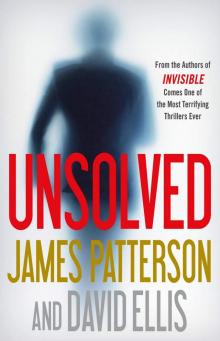 Unsolved
Unsolved Pottymouth and Stoopid
Pottymouth and Stoopid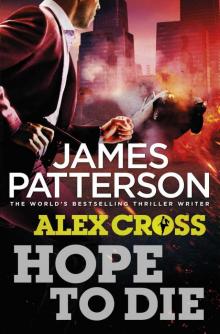 Hope to Die: (Alex Cross 22)
Hope to Die: (Alex Cross 22) The Moores Are Missing
The Moores Are Missing Black & Blue: BookShots (Detective Harriet Blue Series)
Black & Blue: BookShots (Detective Harriet Blue Series) Airport - Code Red: BookShots
Airport - Code Red: BookShots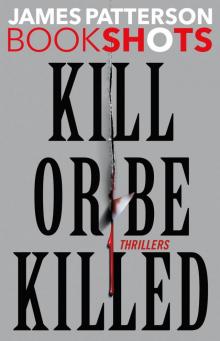 Kill or Be Killed
Kill or Be Killed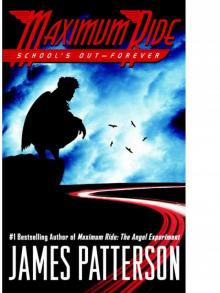 School's Out--Forever
School's Out--Forever When the Wind Blows
When the Wind Blows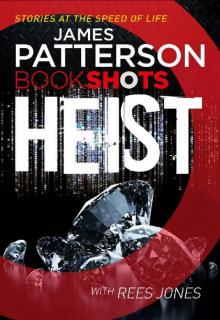 Heist: BookShots
Heist: BookShots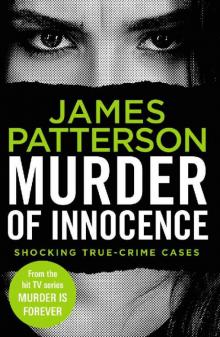 Murder of Innocence (Murder Is Forever)
Murder of Innocence (Murder Is Forever) Red Alert_An NYPD Red Mystery
Red Alert_An NYPD Red Mystery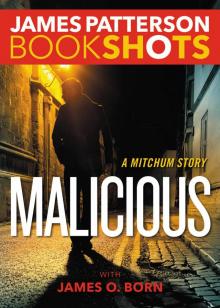 Malicious
Malicious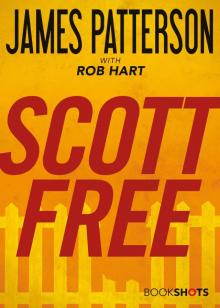 Scott Free
Scott Free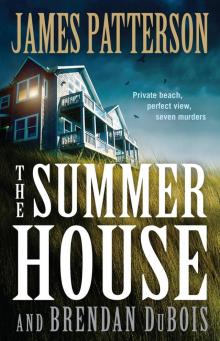 The Summer House
The Summer House French Kiss
French Kiss Treasure Hunters
Treasure Hunters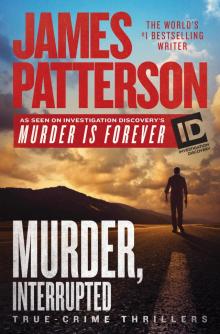 Murder Is Forever, Volume 1
Murder Is Forever, Volume 1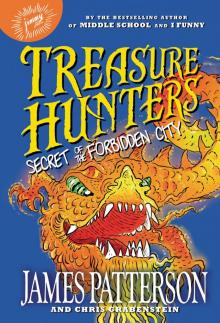 Secret of the Forbidden City
Secret of the Forbidden City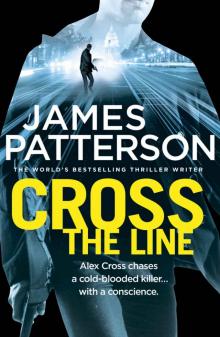 Cross the Line: (Alex Cross 24)
Cross the Line: (Alex Cross 24)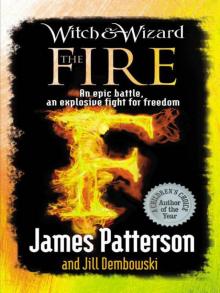 Witch & Wizard: The Fire
Witch & Wizard: The Fire![Women's Murder Club [06] The 6th Target Read online](http://i1.bookreadfree.com/i/03/24/womens_murder_club_06_the_6th_target_preview.jpg) Women's Murder Club [06] The 6th Target
Women's Murder Club [06] The 6th Target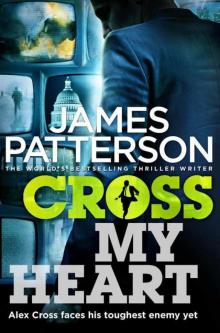 Cross My Heart ac-21
Cross My Heart ac-21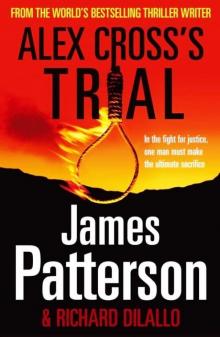 Alex Cross’s Trial ак-15
Alex Cross’s Trial ак-15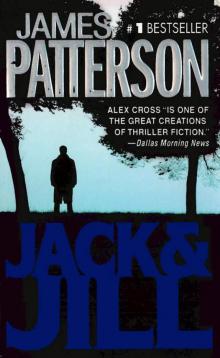 Alex Cross 03 - Jack & Jill
Alex Cross 03 - Jack & Jill Liar Liar: (Harriet Blue 3) (Detective Harriet Blue Series)
Liar Liar: (Harriet Blue 3) (Detective Harriet Blue Series) Cross Country ак-14
Cross Country ак-14 Honeymoon h-1
Honeymoon h-1 Maximum Ride: The Angel Experiment
Maximum Ride: The Angel Experiment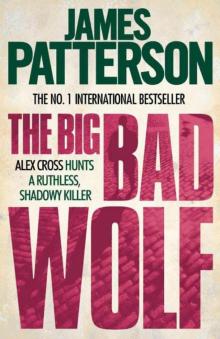 The Big Bad Wolf ак-9
The Big Bad Wolf ак-9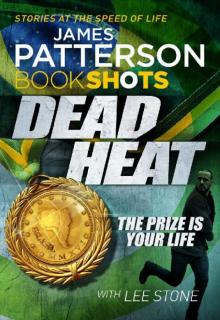 Dead Heat: BookShots (Book Shots)
Dead Heat: BookShots (Book Shots)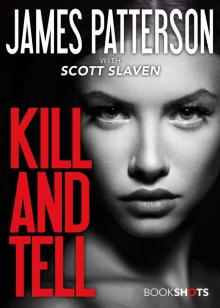 Kill and Tell
Kill and Tell Avalanche
Avalanche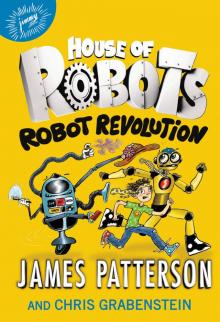 Robot Revolution
Robot Revolution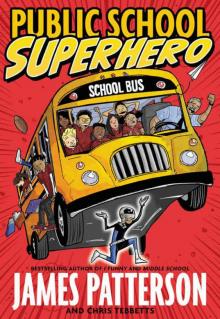 Public School Superhero
Public School Superhero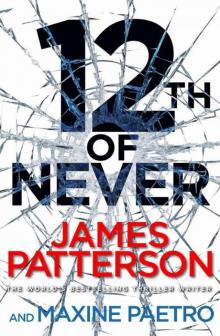 12th of Never
12th of Never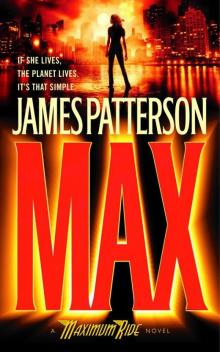 Max: A Maximum Ride Novel
Max: A Maximum Ride Novel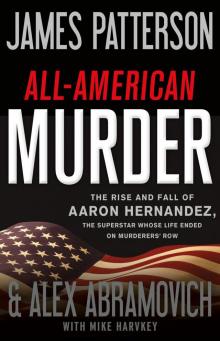 All-American Murder
All-American Murder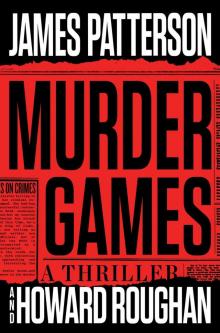 Murder Games
Murder Games Robots Go Wild!
Robots Go Wild!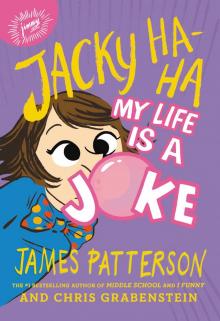 My Life Is a Joke
My Life Is a Joke Private: Gold
Private: Gold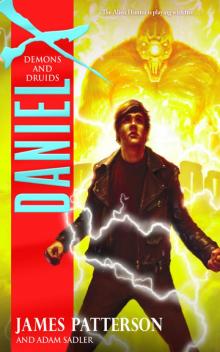 Demons and Druids
Demons and Druids Jacky Ha-Ha
Jacky Ha-Ha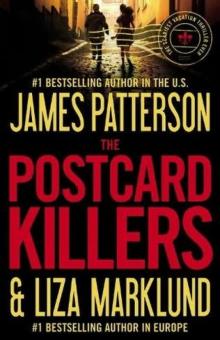 Postcard killers
Postcard killers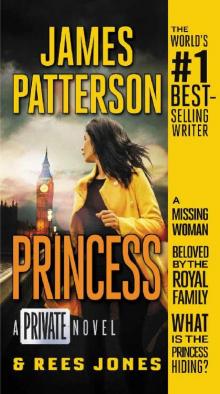 Princess: A Private Novel
Princess: A Private Novel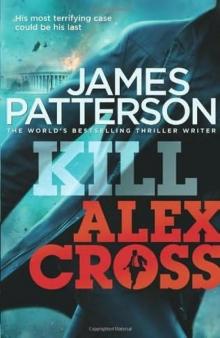 Kill Alex Cross ac-18
Kill Alex Cross ac-18 12th of Never wmc-12
12th of Never wmc-12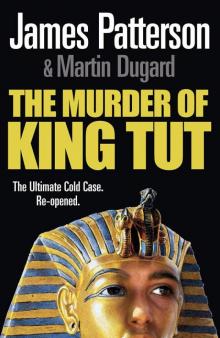 The Murder of King Tut
The Murder of King Tut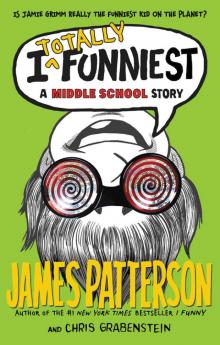 I Totally Funniest
I Totally Funniest Cross Fire ак-17
Cross Fire ак-17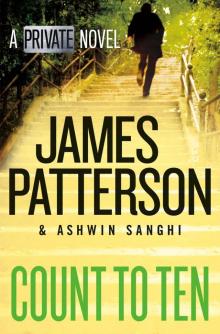 Count to Ten
Count to Ten![Women's Murder Club [10] 10th Anniversary Read online](http://i1.bookreadfree.com/i1/03/30/womens_murder_club_10_10th_anniversary_preview.jpg) Women's Murder Club [10] 10th Anniversary
Women's Murder Club [10] 10th Anniversary![Women's Murder Club [01] 1st to Die Read online](http://i1.bookreadfree.com/i1/03/31/womens_murder_club_01_1st_to_die_preview.jpg) Women's Murder Club [01] 1st to Die
Women's Murder Club [01] 1st to Die I, Michael Bennett mb-5
I, Michael Bennett mb-5 Nooners
Nooners![Women's Murder Club [08] The 8th Confession Read online](http://i1.bookreadfree.com/i1/04/03/womens_murder_club_08_the_8th_confession_preview.jpg) Women's Murder Club [08] The 8th Confession
Women's Murder Club [08] The 8th Confession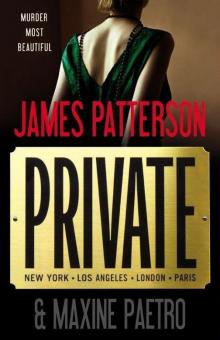 Private jm-1
Private jm-1 Treasure Hunters: Danger Down the Nile
Treasure Hunters: Danger Down the Nile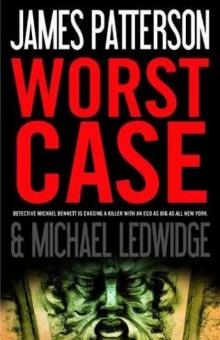 Worst Case mb-3
Worst Case mb-3 Don’t Blink
Don’t Blink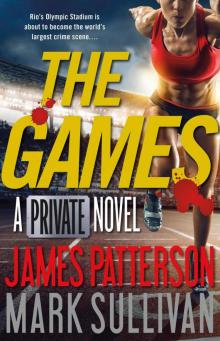 The Games
The Games The Medical Examiner: A Women's Murder Club Story
The Medical Examiner: A Women's Murder Club Story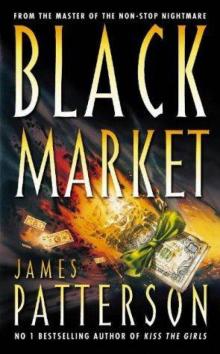 Black Market
Black Market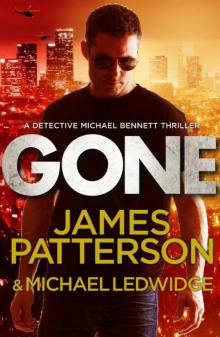 Gone mb-6
Gone mb-6![Women's Murder Club [02] 2nd Chance Read online](http://i1.bookreadfree.com/i1/04/04/womens_murder_club_02_2nd_chance_preview.jpg) Women's Murder Club [02] 2nd Chance
Women's Murder Club [02] 2nd Chance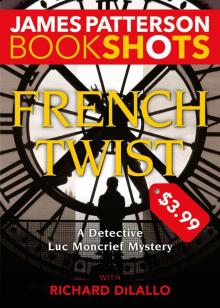 French Twist
French Twist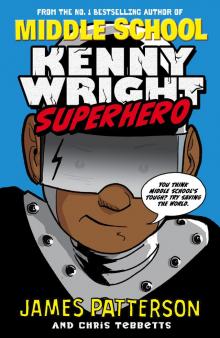 Kenny Wright
Kenny Wright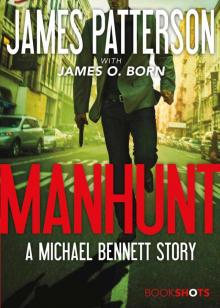 Manhunt: A Michael Bennett Story
Manhunt: A Michael Bennett Story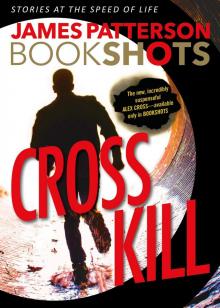 Cross Kill: An Alex Cross Story
Cross Kill: An Alex Cross Story Confessions of a Murder Suspect td-1
Confessions of a Murder Suspect td-1 Second Honeymoon h-2
Second Honeymoon h-2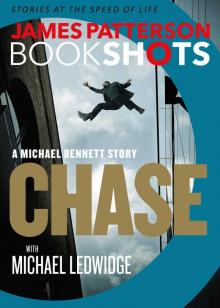 Chase_A BookShot_A Michael Bennett Story
Chase_A BookShot_A Michael Bennett Story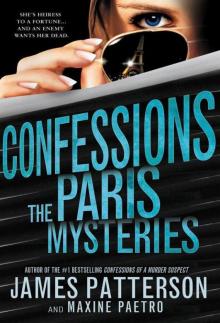 Confessions: The Paris Mysteries
Confessions: The Paris Mysteries![Women's Murder Club [09] The 9th Judgment Read online](http://i1.bookreadfree.com/i2/04/08/womens_murder_club_09_the_9th_judgment_preview.jpg) Women's Murder Club [09] The 9th Judgment
Women's Murder Club [09] The 9th Judgment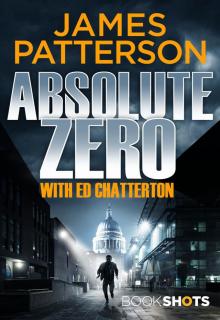 Absolute Zero
Absolute Zero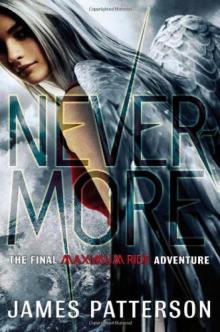 Nevermore: The Final Maximum Ride Adventure mr-8
Nevermore: The Final Maximum Ride Adventure mr-8 Angel: A Maximum Ride Novel mr-7
Angel: A Maximum Ride Novel mr-7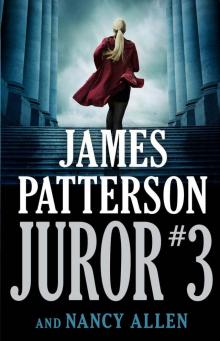 Juror #3
Juror #3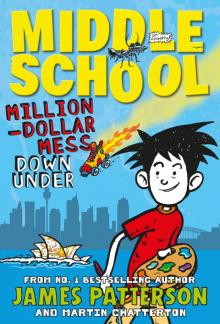 Million-Dollar Mess Down Under
Million-Dollar Mess Down Under The Verdict: BookShots (A Jon Roscoe Thriller)
The Verdict: BookShots (A Jon Roscoe Thriller)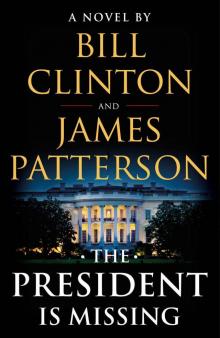 The President Is Missing: A Novel
The President Is Missing: A Novel![Women's Murder Club [04] 4th of July Read online](http://i1.bookreadfree.com/i2/04/06/womens_murder_club_04_4th_of_july_preview.jpg) Women's Murder Club [04] 4th of July
Women's Murder Club [04] 4th of July The Hostage: BookShots (Hotel Series)
The Hostage: BookShots (Hotel Series) $10,000,000 Marriage Proposal
$10,000,000 Marriage Proposal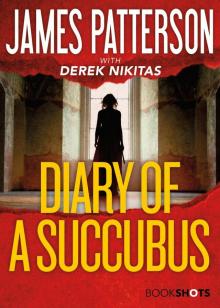 Diary of a Succubus
Diary of a Succubus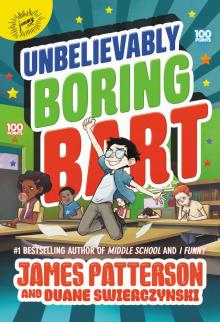 Unbelievably Boring Bart
Unbelievably Boring Bart Angel: A Maximum Ride Novel
Angel: A Maximum Ride Novel Stingrays
Stingrays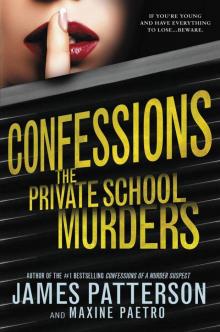 Confessions: The Private School Murders
Confessions: The Private School Murders Stealing Gulfstreams
Stealing Gulfstreams![Women's Murder Club [05] The 5th Horseman Read online](http://i1.bookreadfree.com/i2/04/05/womens_murder_club_05_the_5th_horseman_preview.jpg) Women's Murder Club [05] The 5th Horseman
Women's Murder Club [05] The 5th Horseman Zoo 2
Zoo 2 Jack Morgan 02 - Private London
Jack Morgan 02 - Private London Treasure Hunters--Quest for the City of Gold
Treasure Hunters--Quest for the City of Gold The Christmas Mystery
The Christmas Mystery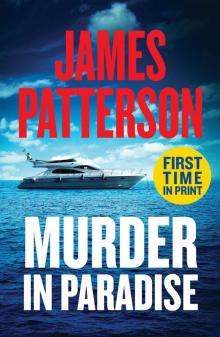 Murder in Paradise
Murder in Paradise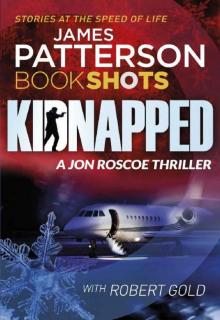 Kidnapped: BookShots (A Jon Roscoe Thriller)
Kidnapped: BookShots (A Jon Roscoe Thriller)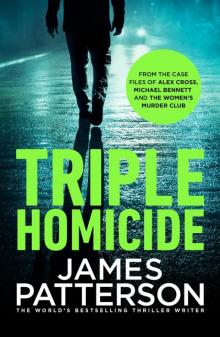 Triple Homicide_Thrillers
Triple Homicide_Thrillers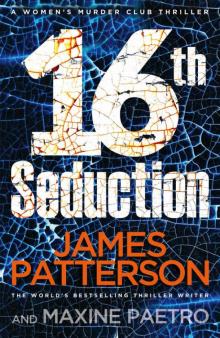 16th Seduction: (Women’s Murder Club 16) (Women's Murder Club)
16th Seduction: (Women’s Murder Club 16) (Women's Murder Club)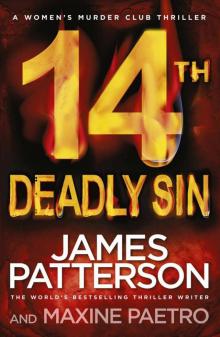 14th Deadly Sin: (Women’s Murder Club 14)
14th Deadly Sin: (Women’s Murder Club 14) Texas Ranger
Texas Ranger Witch & Wizard 04 - The Kiss
Witch & Wizard 04 - The Kiss![Women's Murder Club [03] 3rd Degree Read online](http://i1.bookreadfree.com/i2/04/12/womens_murder_club_03_3rd_degree_preview.jpg) Women's Murder Club [03] 3rd Degree
Women's Murder Club [03] 3rd Degree Break Point: BookShots
Break Point: BookShots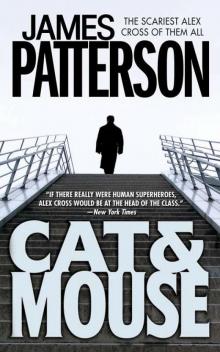 Alex Cross 04 - Cat & Mouse
Alex Cross 04 - Cat & Mouse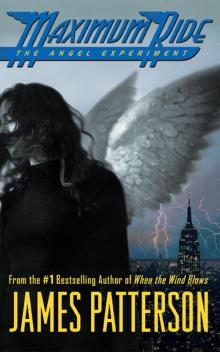 Maximum Ride
Maximum Ride Fifty Fifty: (Harriet Blue 2) (Detective Harriet Blue Series)
Fifty Fifty: (Harriet Blue 2) (Detective Harriet Blue Series) Alex Cross 02 - Kiss the Girls
Alex Cross 02 - Kiss the Girls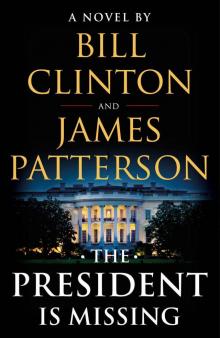 The President Is Missing
The President Is Missing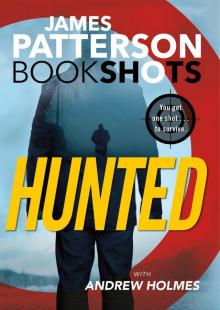 Hunted
Hunted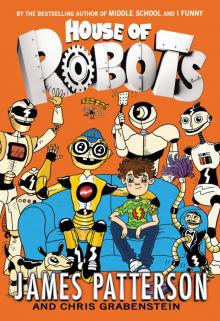 House of Robots
House of Robots Dangerous Days of Daniel X
Dangerous Days of Daniel X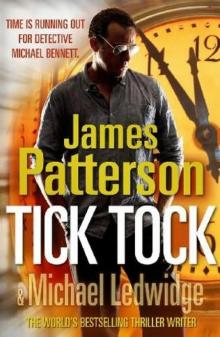 Tick Tock mb-4
Tick Tock mb-4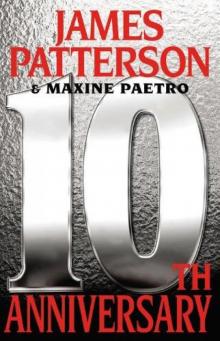 10th Anniversary wmc-10
10th Anniversary wmc-10 The Exile
The Exile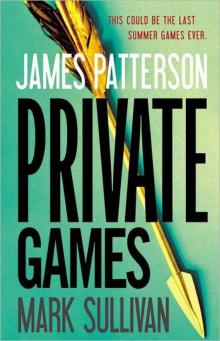 Private Games-Jack Morgan 4 jm-4
Private Games-Jack Morgan 4 jm-4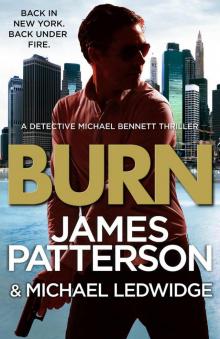 Burn: (Michael Bennett 7)
Burn: (Michael Bennett 7) Laugh Out Loud
Laugh Out Loud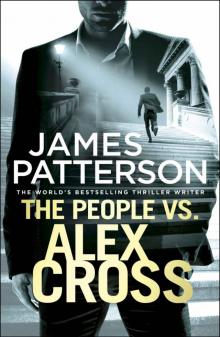 The People vs. Alex Cross: (Alex Cross 25)
The People vs. Alex Cross: (Alex Cross 25)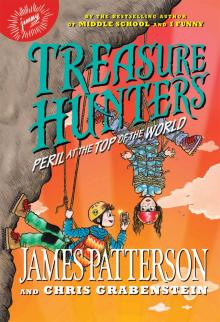 Peril at the Top of the World
Peril at the Top of the World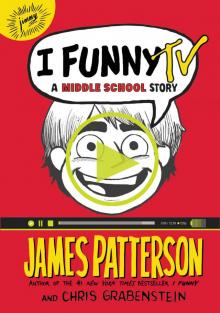 I Funny TV
I Funny TV Merry Christmas, Alex Cross ac-19
Merry Christmas, Alex Cross ac-19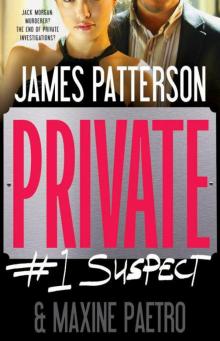 #1 Suspect jm-3
#1 Suspect jm-3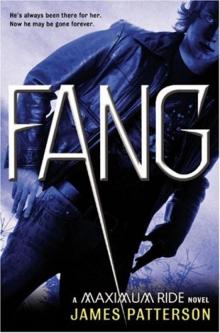 Fang: A Maximum Ride Novel
Fang: A Maximum Ride Novel![Women's Murder Club [07] 7th Heaven Read online](http://i1.bookreadfree.com/i2/04/13/womens_murder_club_07_7th_heaven_preview.jpg) Women's Murder Club [07] 7th Heaven
Women's Murder Club [07] 7th Heaven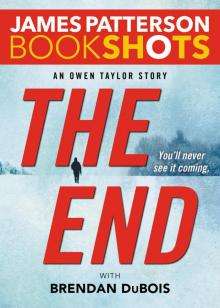 The End
The End